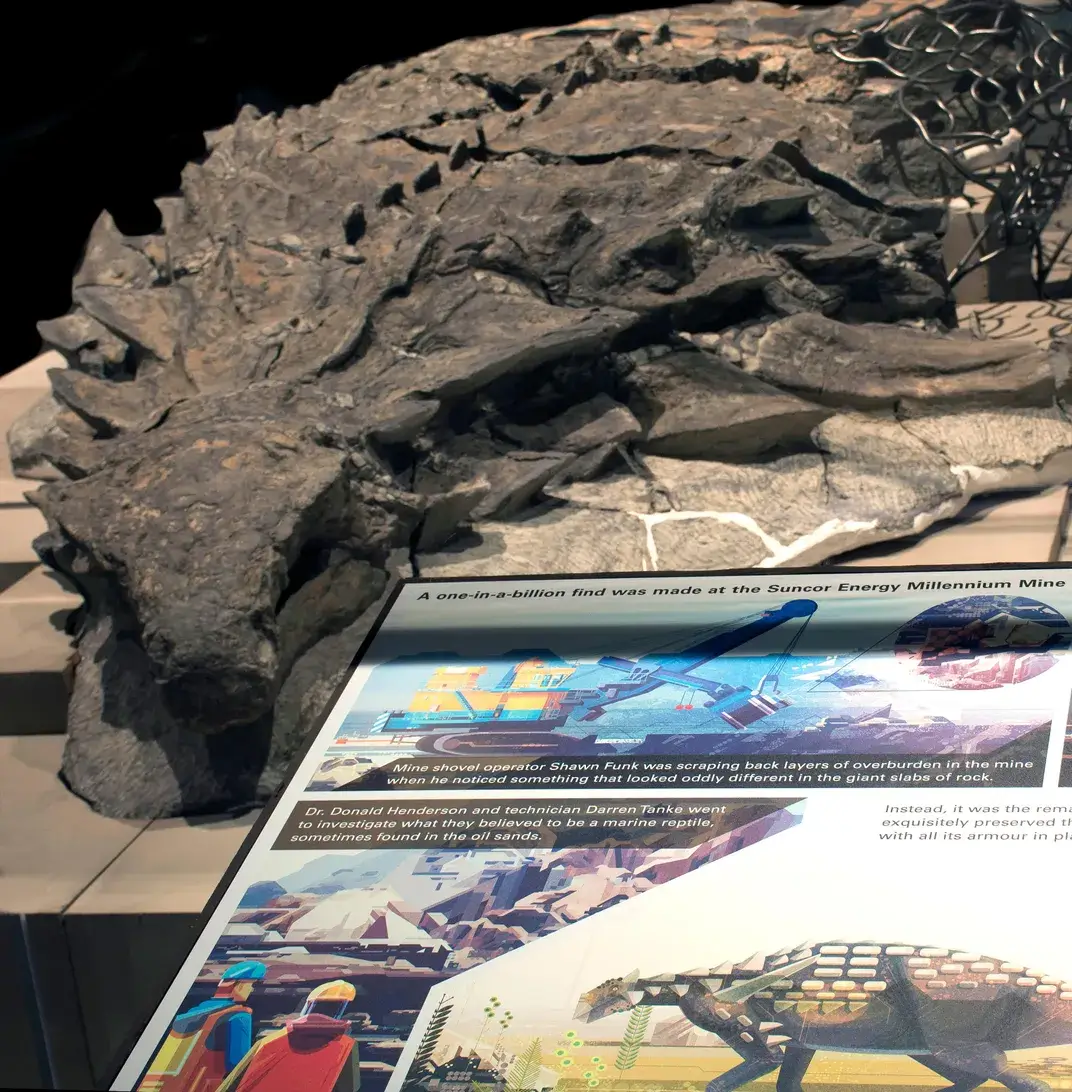
Spectacularly Detailed Armoured Dinosaur ‘Mummy’ Makes Its Debut
A nodosaur found in Alberta includes some of the best preserved dino skin and armour ever found!
By: Jason Daley | Smithsonian
In 2011, a heavy equipment operator at the Millennium Mine in northern Alberta started digging up odd-coloured rock.
He stopped to take a closer look, puzzling over the material, which was speckled with strange patterns. His supervisor quickly realized they had something special, Michael Greshko reports for National Geographic.
The operator had just extracted a bit of fossilized skin from an armored nodasaurus, a type of ankylosaur. But this wasn’t just any fossil, it was one of the best-preserved nodasaurus specimens ever found.
The fossil remains are incredibly lifelike, resembling a sleeping dragon. According to National Geographic, which sponsored the five-year, 7,000-hour preparation of the fossil, it’s likely that the 3,000-pound, 18-foot-long creature died in or near a river.
Octopuses Were Around Before Dinosaurs: The Oldest Known Octopus Fossil Is 330 Million-Year-Old
Then its bloated carcass floated out to sea before sinking back-first into the muck where fossilization began.
“It’s basically a dinosaur mummy—it really is exceptional,” Don Brinkman, director of preservation and research at the Royal Tyrrell Museum where the fossil is housed tells Craig S. Smith at The New York Times.
The remarkable preservation of its armored plates, as well as some preserved scales, are helping palaeontologists finally understand the size and shape of the creature’s keratin defences. “I’ve been calling this one the Rosetta stone for armour,” Donald Henderson, curator of dinosaurs at the Tyrrell Museum tells Greshko.

As Matt Rehbein at CNN reports, the dino is 110 million years old, making it the oldest ever found in Alberta. It also represents a new genus and species of nodosaur. But the most exciting aspect may be at the microscopic level, Greshko reports.
The researchers have detected miniscule bits of red pigment, which could help them reconstruct the dinosaur’s coloration—a feature that may have helped it attract mates.
“This armour was clearly providing protection, but those elaborated horns on the front of its body would have been almost like a billboard,” Jakob Vinther, an animal coloration expert from the University of Bristol who has studied the fossil, tells Greshko.
The new specimen isn’t the only exceptional ankylosaur specimen recently unveiled. Just last week Brian Switek at Smithsonian.com reported that the Royal Ontario Museum discovered a new species in Montana, which they nicknamed Zuul.
That specimen also has some intact armour plates and skin as well as a tail club.
Switek explains that during decomposition the armour plates of ankylosaurs typically fall off and are often washed away or not found.
But the discovery of these two extraordinary samples will go a long way towards helping researchers figure just what these animals looked like and how they used their formidable horns and armour.
The nodosaurus is now on display at the Royal Tyrrell Museum in Drumheller, Alberta, as part of an exhibit highlighting the importance of cooperation between extraction industries and palaeontologists in uncovering fossils.
* * *
NEXT UP!
Scientists Find Out If A Lashing Dinosaur Tail Could Generate A Sonic Boom
Every once in a while, scientists embark on a study to test some weird and wacky hypothesis that makes you wonder why. But let’s indulge them; it can be fun
A new study from a team of palaeontologists and aerospace engineers has simulated a dinosaur‘s tail as it lashes about, all to see whether long-necked sauropods could whip their appendages faster than the speed of sound – quick enough to produce the crack of a small, supersonic boom.
Previous research has suggested the dinos could, if their tails had a bullwhip-like structure adding length. If that were true, these herbivorous dinosaurs might have used their tails to defend themselves against predators or nosy neighbours.
* * *
READ MORE: A Dinosaur Killed On The Day of The Fatal Asteroid May Have Been Discovered
Read more on Palaeontology: Giant ‘Death Shadow’ Dinosaur Found In Argentina Is Largest Megaraptor On Record
Liked it? Take a second to support Collective Spark.
We’d love to hear from you! If you have a comment about this article or if you have a tip for a future Collective Spark Story please let us know below in the comment section.
